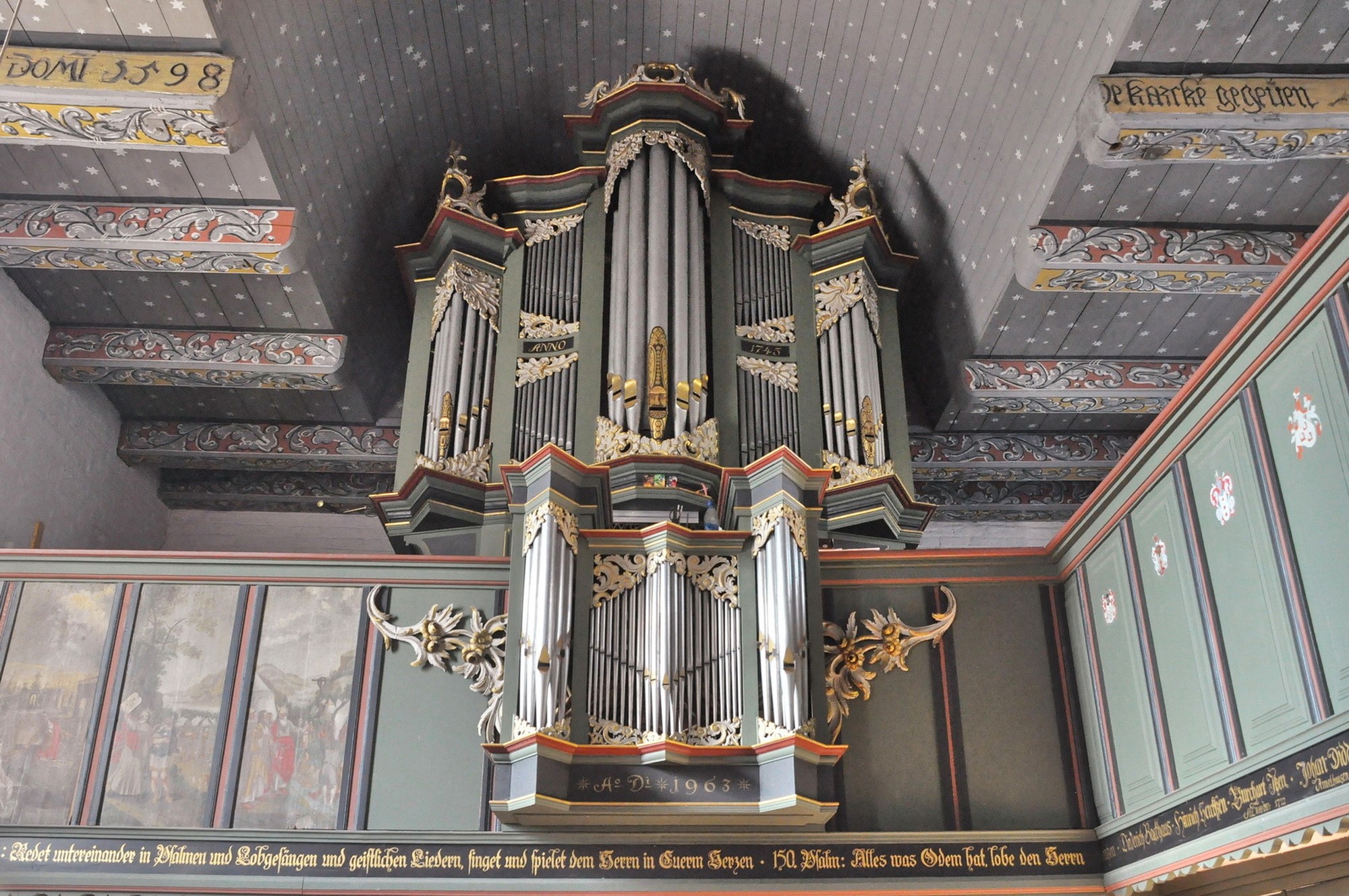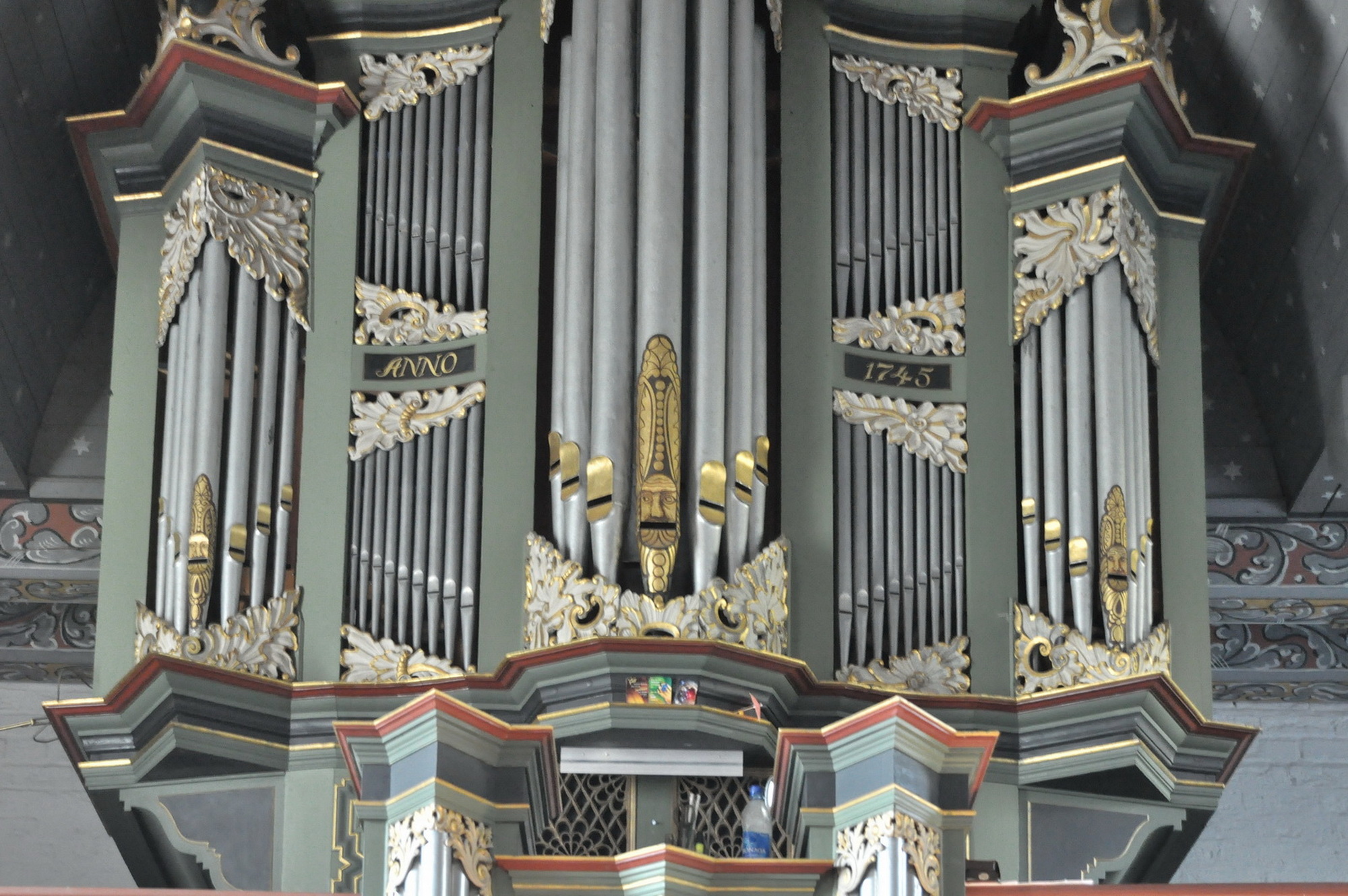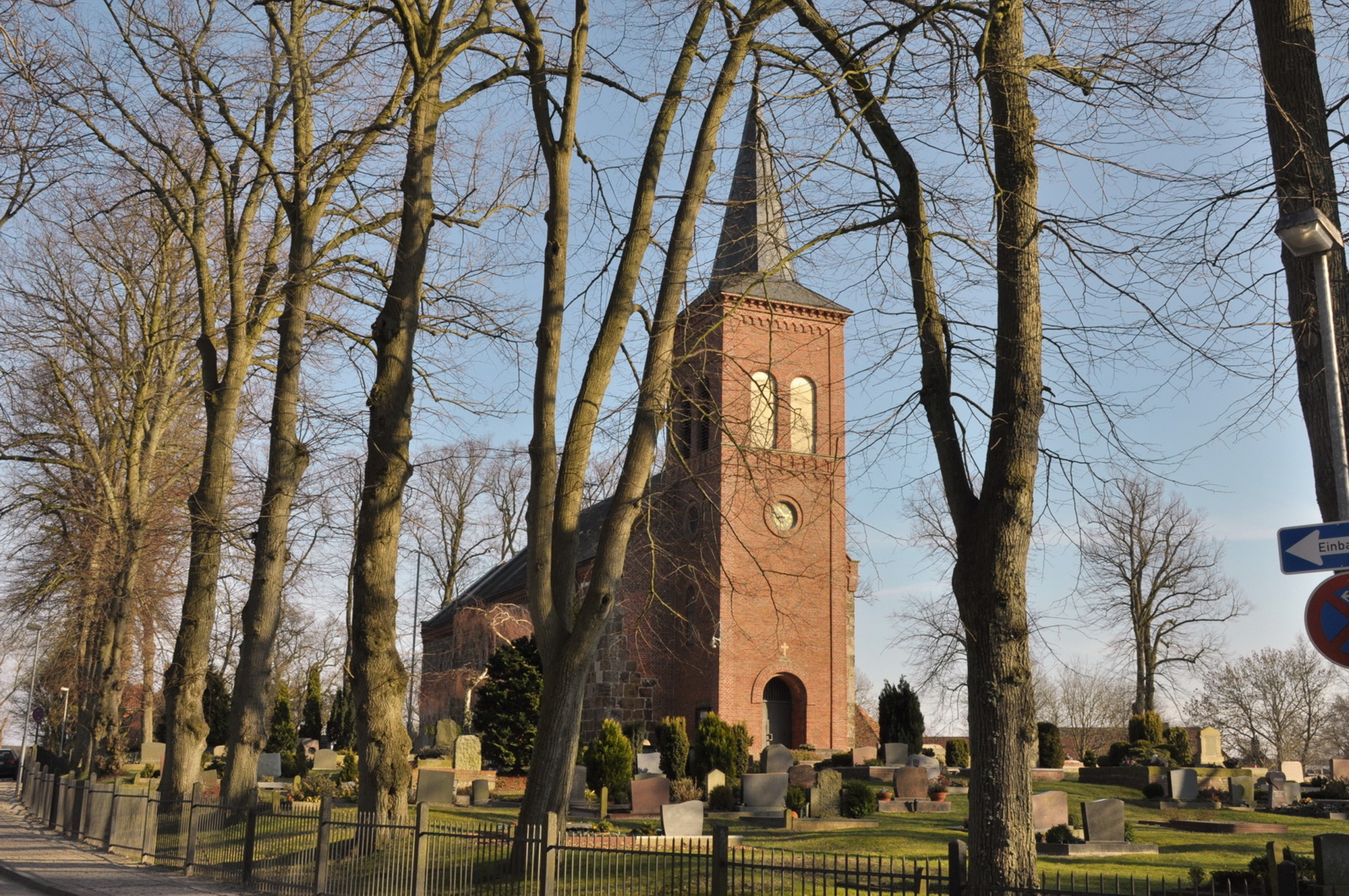Tossens, St. Bartholomäus
| Builder | A. Führer |
|---|---|
| Year | 1963 |
| Period/Style | Baroque |
| Stops | 16 |
| Keyboards | 2+P |
| Keyaction | tracker/mechanical |
The organ in St. Bartholomäus Church, Tossens, has a rich history that spans several centuries. Originally built with ten stops by an unknown organ builder, parts of this early instrument, including six original registers, have survived. In 1811, Christoph Nord dismantled the organ, and it was not until 1815 that it was rebuilt by the organ builder Schmid (I) using materials from an 18th-century organ. Schmid expanded the instrument, adding new elements while preserving older components. This blending of old and new materials became a hallmark of the organ’s construction.
In 1963, Alfred Führer further modernized the organ by adding a Rückpositiv and a pedal division. Führer skillfully reused the remaining historical pipework and manual windchests from the 18th century, preserving the instrument's historical character while enhancing its capabilities. Today, the organ reflects both its baroque origins and 19th- and 20th-century modifications, making it a unique blend of historical craftsmanship and modern restoration.
In 1963, Alfred Führer further modernized the organ by adding a Rückpositiv and a pedal division. Führer skillfully reused the remaining historical pipework and manual windchests from the 18th century, preserving the instrument's historical character while enhancing its capabilities. Today, the organ reflects both its baroque origins and 19th- and 20th-century modifications, making it a unique blend of historical craftsmanship and modern restoration.
| Rückpositiv | Hauptwerk | Pedal |
|---|---|---|
| Gedackt 8' | Principal 8' | Subbass 16' |
| Flöte 4' | Gedackt 8' | Principal 8' |
| Principal 2' | Oktave 4' | Nachthorn 4' |
| Terzian 2f | Rohrflöte 4' | |
| Oktav 1' | Quinte 3' | |
| Oktave 2' | ||
| Mixtur 4f 1 1/3' | ||
| Trompete 8' |
No Video/Audio samples available.
https://nomine.net/orgel/tossens-st-bartholomaeus/
 Pipe Organ Map
Pipe Organ Map

